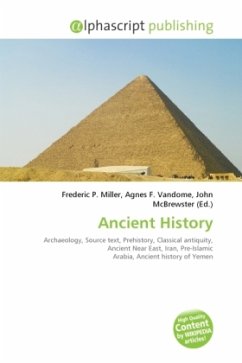High Quality Content by WIKIPEDIA articles! The Ancient Near East refers to early civilizations within a region roughly corresponding to the modern Middle East: Mesopotamia, ancient Egypt, ancient Iran, Armenia, Anatolia and the Levant. As such, it is a term widely employed in the fields of Near Eastern archaeology and ancient history. It begins with the rise of Sumer in the 4th millennium BCE, though the date it ends varies: either covering the Bronze Age and the Iron Age in the region, until the conquest by the Achaemenid Empire in the 6th century BCE or Alexander the Great in the 4th century BCE, or until the conquest by the Islamic Caliphate in the 7th century CE. The ancient Near East is considered the cradle of civilization. It was the first to practice intensive year-round agriculture, it gave the rest of the world the first writing system, invented the potter's wheel and then the vehicular- and mill wheel, created the first centralized governments, law codes and empires, as well as introducing social stratification, slavery and organized warfare, and it laid the foundation for the fields of astronomy and mathematics.
Bitte wählen Sie Ihr Anliegen aus.
Rechnungen
Retourenschein anfordern
Bestellstatus
Storno








